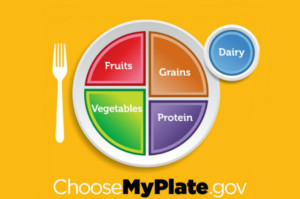The topic of nutrition has never been hotter, and never have there been so many different ideas about what constitutes healthy eating. Despite the apparent differences on the surface, the common thread throughout most of the dietary dogma is a focus on whole foods.
What’s the difference between whole foods and processed foods?
There isn’t a universally accepted definition for either whole foods or processed foods, and the words themselves can be misleading somewhat. Most people loosely describe a whole food as being as close to its natural state as possible: a carrot, steel cut oats, or a free-range egg, for example. In contrast, a processed food evokes images of food-like products chock full of refined components, preservatives, and artificial colors, flavors, and sweeteners. But is the difference always that straightforward?
The term whole foods is often interchanged with other terms, such as local, fresh, organic, and free of genetically-modified organisms (GMO). Whole foods can be all of those things, or they can be frozen instead of fresh, transported from great distances and not local, or conventionally grown.

On the other hand, a processed food needn’t necessarily be unhealthy: Greek yogurt, pre-seasoned salmon fillets, or a good quality granola free of hydrogenated oils and concentrated sweeteners are common examples.
It’s important to note that all purchased food is processed to some degree. However, a distinction is made between, for example, carrots that are washed, pre-cut and packaged, and a product that has artificial and refined ingredients plus added salt and sugars. The focus should be on quality.
The benefits of focusing on quality
People often focus on the Nutrition Facts table, dutifully looking at calories, grams of fat, sugar, and fiber, and milligrams of cholesterol and sodium, and use this information to assess a product’s value. While those are important considerations, they don’t cover every aspect of a food product’s quality. It’s the ingredients list that is the best indicator of how highly processed a food product is.
Whole, less processed foods, using the general definitions above, will have innumerable health-promoting compounds that go beyond calories, vitamins, and minerals – compounds that make the difference between surviving and thriving, that help to reduce the risk for chronic disease, and are often what’s lost in the dialogue about healthy eating.
As an example, crispy apple snack chips may seem like a great choice, since they are based on fruit, and an ounce has just 20 g of carbohydrates and 15 mg of sodium, with 2 g of fiber and 55 mg of potassium, plus added vitamin C. On the other hand, a small apple with the same amount of carbohydrates will have about half the calories, nearly twice the fiber and potassium, and nearly no sodium. Further, the chips are sweetened with corn syrup and are prepared in oils from undesirable sources, whereas the apple contains all natural sugars with nearly no fat. Just as important, the fresh apple contains water and more naturally occurring antioxidants and other phytonutrients, which boost the nutritional quality overall. The choice is clear!
Choosing less processed foods
One of the easiest ways to eat less processed foods is by displacing them with more whole foods. Buy good quality food products – do your homework and know your source. In addition to paying attention to the Nutrition Facts, try the following:
- Eat more fresh and frozen vegetables and whole fruit.
- Include more pulses/legumes: chickpeas, lentils, dried peas and beans.
- Choose whole grains and whole grain products more often.
- Choose fresh meats, fish, and poultry over deli and fast food meats.
- Avoid packaged foods with ingredient names that look like chemicals; some may be vitamins, but the majority are likely to be artificial preservatives, colors, and flavor ‘enhancers’ (read: sodium).
- Avoid foods that have ‘hydrogenated,’ ‘partially hydrogenated,’ or ‘fractionated’ oil.
- Learn to identify how added sugars may be listed in the ingredient list: agave syrup, brown rice syrup, corn syrup, date sugar, dextrose, glucose, glucose-fructose, glucose solids, fructose, fruit juice concentrate, honey, invert sugar, malt syrup, maltose, maltodextrin, molasses, and sucrose.
- Avoid artificial sweeteners, such as high-fructose corn syrup (HFCS), aspartame, sucralose, saccharin, and acesulfame-K.
- Consider buying certified organic products – not only do they not contain GMOs, but they tend to have more whole, natural ingredients overall; be careful not to confuse the ‘organic’ label with the less regulated ‘natural’
What it all means for weight and health management
Processed foods can interfere with your lifestyle improvement efforts in several ways. First, many of the chemicals are simply not healthy for anyone’s body, large or small. Second, the common processing method of removing moisture and/or fiber diminish satiety – the feeling of fullness and satisfaction after eating that serves to prevent hunger and overeating; this removal also results in a higher concentration of unbuffered carbohydrates, which can bump up blood sugar and insulin levels and thus contribute to weight gain and health risks. Third, important natural food components – including phytonutrients that act as antioxidants – are often reduced or lost in the food refinement process. Finally, and no less importantly, a food whose composition has been significantly changed from its natural state may not be recognized as nutritious by the body – even if some of the nutrients are added back in – which then may go into ‘starvation’ mode; this is the same dreaded phenomenon that occurs after crash-dieting, wherein every calorie is exaggerated, and rebound weight gain comes in spades.
_________________________________________
If better overall health and weight management are your goals, an important key is eating whole foods. They will provide you with nutrients that your body needs more reliably than will processed foods, and with considerably fewer disadvantages. Though processed foods may ‘keep’ longer on the shelf, preservation of whole foods at home can be as simple as good refrigeration or freezing, or efficient scheduling of purchases. Further, whole foods tend to be less expensive than processed because of the type of packaging and fewer-to-no added ingredients. The pay-off from investing in your health will be many, many times greater.




Hi, ijamieson. You’re right, sorry! If you can make your own soups, that is ideal (lots of recipes on this site). If you’re in a pinch, organic brands (low-salt versions) are generally the way to go.
I eat a lot of tinned soup Heinz usually . I take it that these are processed and therefore not good for us?
your organic does not use pesticides and non natural fertilizers to grow the product hence the blemishes and wilting could be the lack of machines that maybe cutting and packaging the fruit and veggies because the grower was smaller.
Commercial strawberries take 500lbs of pesticides per acre to grow. They are pretty and clean, but frankly deadly over your life time. I prefer to have some control over my health and the first place I start is with healthy foods and a healthy digestive tract to absorb those foods . If you want more info read a book called “Conquering any Disease” the ultimate High-Phytochemical food healing system. It will change your life it did mine.
Likely because organic foods are produced on a smaller skill; supply and demand
I have a question that nobody seems to be able to answer. If processed foods have to go through a “manufacturing” process and organic foods are sold “as is”; why are organic foods more costly? I have also noticed in the grocery stores that the organic produce looks old and wilted while the non-organic looks crisp and new. Why?
excellent